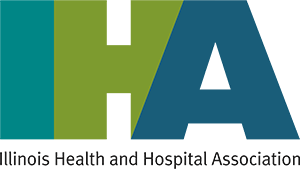IDPH Naloxone Standing Order
October 9, 2017
Memorandum
IDPH Naloxone Standing Order
On October 2, 2017, the Illinois Department of Public Health (IDPH) issued the Illinois Naloxone Standing Order with the intent to increase and simplify procurement of naloxone for patients at risk of overdose and their families, first responders such as EMS and law enforcement, and other community programs that aim to reduce opioid overdoses.
The Illinois Naloxone Standing Order acts as a prescription and allows pharmacists, pharmacies, and opioid overdose education and naloxone distribution (OEND) programs to obtain and/or distribute naloxone. Non-pharmacy OEND programs may include hospitals and urgent care facilities, law enforcement, drug treatment programs, local health departments, and other community based programs.
Pharmacies and OEND Programs may obtain the standing order form by completing the information requested by the state. Access a sample form.
Although the ability to apply for and obtain the standing order for a pharmacist, pharmacy or OEND is effective immediately, prior to obtaining the Illinois Naloxone Standing Order:
Participating pharmacies and pharmacists must be licensed under the Illinois Pharmacy Practice Act (225 ILCS 85). Pharmacists must complete an approved training program to utilize the Naloxone Standing Order and have knowledge of the Illinois Naloxone Standardized Procedure. Pharmacies/pharmacists should report naloxone dispensing to the Illinois Prescription Monitoring Program.
Hospital and urgent care facilities must create an OEND program and register as a Drug Overdose Prevention Program (DOPP) with the Illinois Department of Humans Services, Division of Alcoholism and Substance Abuse. More information about the DOPP program is available, including the enrollment package.
View FAQs regarding Naloxone, Opioids and the Standing Order.
Naloxone resources including approved pharmacist training and a patient guide on how to use naloxone can be found on the IDPH website.
For hospitals, this is potentially significant in interactions with law enforcement procurement of naloxone and in helping patients obtain the drug.
Previous to the standing order, some hospitals reported that first responders such as law enforcement were approaching hospitals for naloxone procurement. The response from the hospital community to these requests has been variable based on different interpretations of law and risk. With this standing order, law enforcement can register as an OEND and use the standing order to procure, distribute and dispense naloxone to individuals who overdose on opioids.
For patients and families who request naloxone as a rescue agent for individuals at risk or have a history of overdose, they can be directed to a participating pharmacy/pharmacist to obtain the reversal agent.
Hospitals can also register as an OEND and distribute naloxone to patients, families or community members without a provider prescription.
The standing order aligns with the Illinois Opioid Action Plan and is an essential strategy in reducing projected opioid overdose deaths in the next three years.

